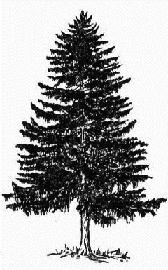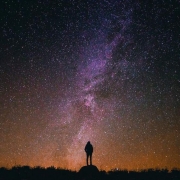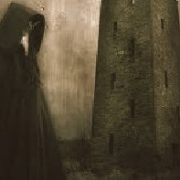A Time for Remembering
WHEN THE FAMILY GATHERS ON THE MOTHER NIGHT….


EVERGREENS decorate the home at this time of year. The Victorians used just about everything that was available: rosemary, bay laurel, holly, box, yew, and mistletoe, even bilberry. When all outside is brown and dead they are manifestations of the abiding life within the plant world. Holly and fern and mistletoe are ancient symbols of immortality. But the focal point for our modern celebrations is the Yule tree, representing the World Ash, Yggdrasil, which, standing symbolically at the centre of the universe, links the heavens, the earth and the underworld.
This sacred emblem is described 6y the Sybil in one of the poems of the Elder Edda: ‘I know an ash tree named Yggdrasil: sparkling showers are shed on its leaves that drip dew into the dales beyond. By Urd’s well it waves evergreen.’ Elsewhere in the Edda we are told that the gods go every day to hold judgment by the ash, and it is further described in mystical terms: ‘Three roots spread three ways under the ash Yggdrasil: Hel is under the first, frost-giants under the second, mankind below the last.’ (Taylor and Auden translation.) The ash is the oracle, the judgment place of the gods, the dwelling of the Norns and the source of the spring of knowledge. The word ash itself derives from the Old Norse askr, man, for it is the tree from which Odin created the first man.
It is well-known that Queen Victoria’s consort, Prince Albert, introduced the ‘Christmas tree’ into Windsor castle in 1841 (two years before the first ‘Christmas card’ was published in London) and it was not long before every family in the land had their own version of it. It is now invariably represented in English living rooms by the fir (often a plastic replica) which is, ironically, the darkest and most saturnine of all trees.
The Yule tree in its domestic setting, is assisted in its interpretative function by various decorative additions: a star shines at the top, expressing mankind’s yearning for spiritual things and shimmering tinsel of silver or gold represent Sif’s hair (she is the fairest of all women and the wife of Odin’s son, Thor, and was given new golden hair wrought by the dwarfs). These decorations all help to dispel the fog of materialism and ‘depression with which our lives are beset. When the tree is illuminated (and the rest of the room is in darkness) a sudden silence is shed upon all who see it for the first time. No presents should hang from its branches; they should be piled around its base or upon a nearby table.

The tree should be at night a thing of wonder, shining with countless lights and glittering ornaments. Its preparation should be surrounded with solemn secrecy and its hidden glory revealed only on the Mother Night – 21st December.
Yuletide is a festival for remembering as well as for goodwill and the tree is a tangible reminder of this. It is a kind of sacrament linking mankind to the mysteries of nature. People once held their ancestors in far higher esteem than is now the custom; they believed that the spirit on leaving the body at the moment of death was drawn to some other living entity – a tree: perhaps an ash, an oak or an elm. Thus there arose the concept of the sanctity of trees and their identification with the ancestors, an aspect of paganism that is emphasised by the evergreen nature of the tree that we see as the central symbol at this Midwinter season.
Apart from its symbolism the tree provides a natural gathering place for the family (even more so now that the television set has replaced the fireplace in that function). It creates memories for children to treasure in later years, it is an excuse for reminiscing by grandparents and an ideal opportunity for parents (or anyone else) to discuss its meaning and its place in the emblems of our holy faith.
For even in this technological age we still introduce on to the domestic scene, at this one time of the year, a symbol of one of the most ancient spiritual beliefs of our folk, and by its presence we unwittingly transform our living rooms into a sanctuary, even if we ourselves no longer consciously indulge in the tree worship of our forefathers.



